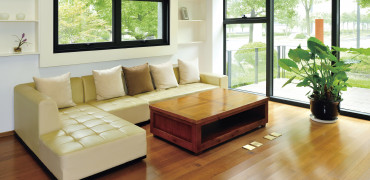News last week on the BBC website that London’s air quality has not exceeded legal limits in mid-January for the first time in 10 years is obviously good news that everyone will welcome.
It is certainly better than breaching these limits by the 6th day of the year – as has happened every single year for the past decade.
The capital is still likely to exceed what are known as NOX limits (i.e. nitrogen dioxide or NO2) by the end of the month so air quality and air pollution is still a major issue that needs to be tackled.
And this is not just a London-based problem as anyone commuting to any town or city in the UK will testify.
So whilst government and industry try to find workable solutions, which will obviously take some time, we need to find ways to help ensure that the buildings people spend so much time in, are helping protect them as much as possible from the noxious outdoor air.
Is there more that the industry can do to make our buildings safe havens from outdoor pollution
Not just a London problem
We’ve covered indoor air quality on The Hub before such as this article from Modern Building Services which asks whether air quality should actually become a planning issue.
Once again though, this will require legislation and political determination – and we all know how long that can take!
So as the people delivering and maintaining the equipment necessary for heating, cooling and ventilation to keep occupants comfortable, is there more that the industry can do to make our buildings safe havens from outdoor pollution?
What’s the problem?
Air pollution is a major public-health crisis, with an estimated 9,000 people in London alone dying prematurely each year because of long-term exposure to air pollution. The estimate for the whole of the country is up to 40,000 a year.
According to the Building Research Establishment (BRE), exposure to air pollutants depends a lot on our exposure to indoor air and when we spend an estimated 90 per cent of our time inside buildings, then we really need to ensure that they are able to provide a respite from the toxic outdoors.
So how can we introduce fresh air into our buildings in ways that minimise pollution levels and also help maximise energy efficiency?
BRE identify the pollutants that have the potential to get inside our buildings from the outdoors as nitrogen dioxide (NOX), as well as carbon monoxide. In addition to these are what are known as volatile organic chemicals or VOCs, fibres and particulate matter, as well as bacteria, fungi and pollen.
Poor air quality has been linked to Sick Building Syndrome, which can impair learning in our schools as well as reduce productivity in offices.
BRE talks about the control of pollutants depending on not only tackling the sources, but also making sure there is adequate ventilation within buildings, through the introduction of 'fresh' outdoor air.
And this is where the double challenge lies – and a real opportunity to tackle the issue in an energy efficient way.
Clean air AND energy saving
In the first instance, building operators should look at their existing ventilation systems to ensure they are working effectively and that incoming air is properly filtered and cleaned as this is the quickest way to make a major difference to the health and well-being of building occupants.
Key to all of this is ensuring regular maintenance of all equipment bringing air into a room, if only to make sure that the filters are regularly cleaned so that they can do what they are meant to – and ‘filter’ out anything that shouldn’t be in the air. This applies to air conditioning units as well as ventilation systems.
Today’s modern buildings are now required to be built and renovated into being more airtight in an effort to reduce individual energy consumption and therefore the whole nation’s emissions levels.
Introducing adequate ventilation into these airtight buildings is therefore essential to ensure they are comfortable spaces for us all.
This is where mechanical ventilation with heat recovery (MVHR) can make a real difference as these systems offer an energy-efficient way of introducing ventilation in polluted cities where simply opening the windows is not an option.




